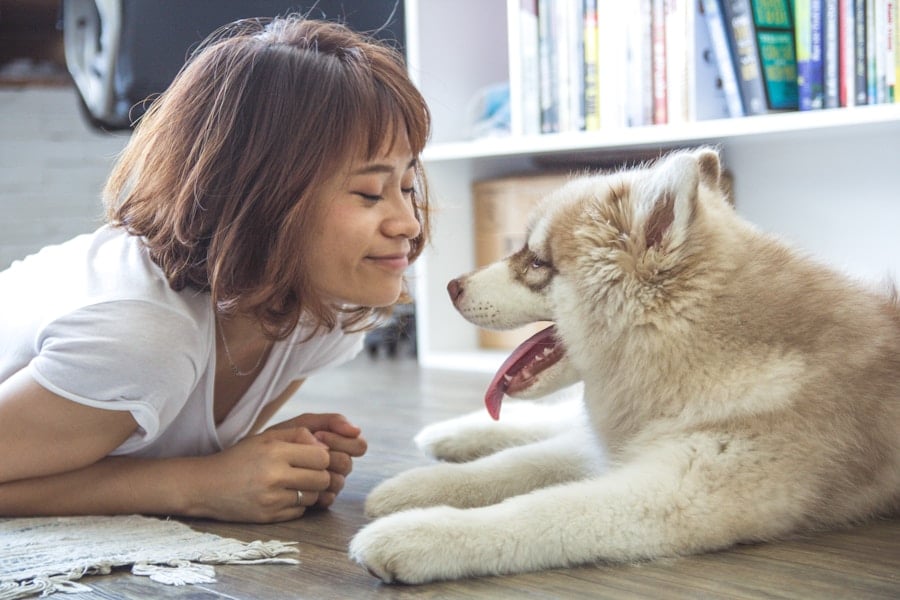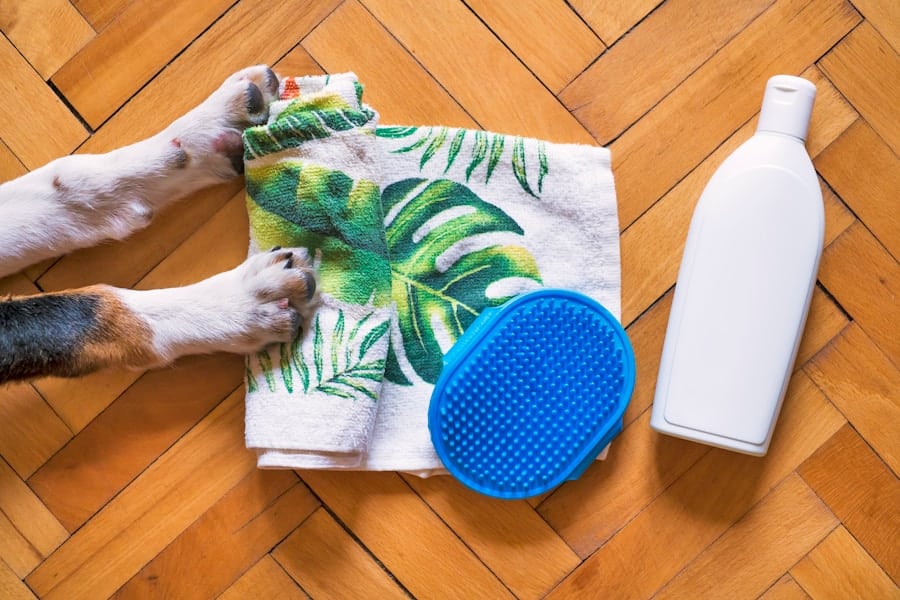The advent of artificial intelligence (AI) has revolutionized numerous industries, and the pet care sector is no exception. AI-powered pet care devices are increasingly becoming integral to how pet owners manage their furry companions’ health, nutrition, and overall well-being. These devices leverage advanced algorithms and machine learning to provide insights and solutions that were previously unattainable.
From smart collars that monitor vital signs to automated feeders that dispense the right amount of food at the right time, the landscape of pet care is evolving rapidly. This technological shift not only enhances the quality of life for pets but also alleviates some of the burdens faced by pet owners in their daily routines. As pet ownership continues to rise globally, so does the demand for innovative solutions that cater to the needs of both pets and their owners.
The integration of AI into pet care devices allows for a more personalized approach, tailoring care to the specific requirements of individual animals. This personalization is crucial, as different breeds and ages have varying needs. Moreover, the data collected by these devices can lead to better-informed decisions regarding a pet’s health and lifestyle, ultimately fostering a deeper bond between pets and their owners.
The following sections will delve into the various functionalities of AI-powered pet care devices, illustrating how they contribute to a more harmonious living environment for pets and their human companions.
Key Takeaways
- AI-powered pet care devices offer innovative solutions for monitoring and enhancing the well-being of pets.
- These devices enable pet owners to track their pet’s health and activity levels, providing valuable insights for proactive care.
- Automated feeding and nutrition management features help ensure that pets receive the right amount of food and nutrients.
- Behavioral training and enrichment tools can help improve a pet’s mental and physical stimulation.
- Remote interaction and entertainment features allow pet owners to engage with their pets even when they are away from home.
Monitoring and Tracking Pet Health and Activity
One of the most significant advancements in AI-powered pet care is the ability to monitor and track a pet’s health and activity levels in real-time. Smart collars equipped with sensors can track vital signs such as heart rate, temperature, and even respiratory patterns. For instance, devices like the Whistle Go Explore not only monitor activity levels but also provide insights into a pet’s overall health by analyzing changes in behavior.
If a dog typically runs around energetically but suddenly becomes lethargic, the collar can alert the owner to potential health issues that may require veterinary attention. In addition to physical health monitoring, these devices often include GPS tracking features that allow owners to keep tabs on their pets’ whereabouts. This is particularly beneficial for those with adventurous pets who may wander off during walks or playtime.
The ability to set up geofencing alerts means that owners can receive notifications if their pet strays beyond a designated area. This combination of health monitoring and location tracking not only enhances safety but also provides peace of mind for pet owners, knowing they can quickly locate their furry friends if they go missing.
Automated Feeding and Nutrition Management
Automated feeding systems represent another significant leap forward in pet care technology. These AI-powered devices can dispense precise portions of food at scheduled times, ensuring that pets receive the right amount of nutrition without overindulgence. For example, the PetSafe Smart Feed allows owners to control feeding schedules remotely via a smartphone app, making it easier to manage a pet’s diet even when away from home.
This feature is particularly useful for busy professionals or those with irregular schedules who may struggle to maintain consistent feeding times. Moreover, some advanced feeders are equipped with AI algorithms that analyze a pet’s eating habits over time. By tracking how much food a pet consumes and how often they eat, these devices can make recommendations for dietary adjustments based on individual needs.
For instance, if a cat tends to graze throughout the day rather than eating all at once, the feeder can be programmed to dispense smaller portions more frequently. This level of customization not only helps maintain a healthy weight but also addresses specific dietary requirements, such as those needed for pets with allergies or sensitivities.
Behavioral Training and Enrichment
AI-powered devices are also making strides in behavioral training and enrichment for pets. Interactive toys and training tools equipped with AI capabilities can adapt to a pet’s learning pace and style, providing a more effective training experience. For example, devices like the Pet Tutor use positive reinforcement techniques to train dogs by dispensing treats when they perform desired behaviors.
The AI component allows the device to recognize specific commands and adjust its responses based on the dog’s progress, ensuring that training remains engaging and effective. In addition to training, these devices can provide mental stimulation through interactive play. Toys that respond to a pet’s movements or vocalizations can keep them entertained while also encouraging physical activity.
For instance, the CleverPet Hub is an interactive device that challenges dogs with puzzles that require them to solve tasks in order to receive treats. This not only helps alleviate boredom but also promotes cognitive development, which is essential for a pet’s overall well-being.
Remote Interaction and Entertainment
The ability to interact with pets remotely has become increasingly important in today’s fast-paced world. AI-powered cameras and communication devices allow pet owners to check in on their animals while away from home, providing reassurance for both parties. Devices like Furbo offer two-way audio and video capabilities, enabling owners to see and speak to their pets in real-time.
This feature can be particularly comforting for pets who experience separation anxiety, as hearing their owner’s voice can help alleviate stress. Moreover, these devices often come equipped with treat-dispensing features that allow owners to reward their pets even when they are not physically present. This remote interaction fosters a sense of connection between pets and their owners, reinforcing positive behaviors while also providing entertainment during lonely hours.
Some devices even include built-in games that engage pets’ natural instincts, such as chasing or hunting, further enriching their environment while keeping them active.
Safety and Security Features
Safety is a paramount concern for any pet owner, and AI-powered devices are increasingly incorporating features designed to enhance security. Smart collars equipped with GPS tracking not only help locate lost pets but also often include features like activity monitoring that can alert owners to unusual behavior patterns indicative of distress or danger. For example, if a collar detects sudden changes in activity levels—such as excessive barking or rapid movement—it can send an alert to the owner’s smartphone.
Additionally, some AI-powered cameras are designed specifically for monitoring pets at home. These cameras can detect unusual sounds or movements and send alerts to owners’ phones, allowing them to respond quickly if something seems amiss.
This proactive approach not only protects pets from potential hazards but also helps maintain a safe home environment.
Integration with Veterinary Care
The integration of AI-powered pet care devices with veterinary care represents a significant advancement in holistic pet management. Many smart collars and health monitoring devices can sync data directly with veterinary practices, allowing veterinarians to access real-time health information about their patients. This seamless exchange of data enables more informed decision-making regarding treatment plans and preventive care strategies.
For example, if a smart collar detects irregular heart rates or unusual activity patterns over time, this information can be shared with a veterinarian who can then recommend further diagnostics or adjustments in care. Additionally, some devices offer reminders for vaccinations or medication schedules based on the data collected from the pet’s health monitoring system. This integration not only streamlines communication between pet owners and veterinarians but also ensures that pets receive timely medical attention when needed.
Future Developments and Potential Impact on Pet Well-Being
As technology continues to advance at an unprecedented pace, the future of AI-powered pet care devices holds immense potential for enhancing pet well-being further. Innovations such as advanced biometric sensors could provide even more detailed insights into a pet’s health status, allowing for early detection of diseases before symptoms become apparent. Imagine collars that can analyze blood glucose levels or hydration status in real-time—these developments could revolutionize how chronic conditions are managed in pets.
Moreover, as machine learning algorithms become more sophisticated, we may see devices that can predict behavioral changes based on environmental factors or even emotional states. Such capabilities could lead to tailored enrichment activities that cater specifically to a pet’s mood or energy levels at any given time. The potential for AI-driven solutions extends beyond individual pets; it could also foster community-wide initiatives aimed at improving animal welfare through shared data insights among local veterinarians and shelters.
As these technologies continue to evolve, they promise not only to improve the lives of pets but also to strengthen the bond between animals and their human companions in ways we are just beginning to understand.
If you’re interested in the latest technology trends, you may also want to check out this article on the best Toshiba laptops for 2023. Just like AI-powered pet care devices are enhancing pet well-being, staying up to date with the best laptops can also improve your overall productivity and efficiency.
FAQs
What are AI-powered pet care devices?
AI-powered pet care devices are technological tools that utilize artificial intelligence to monitor, track, and improve the well-being of pets. These devices can range from smart feeders and water dispensers to health monitors and activity trackers.
How do AI-powered pet care devices enhance pet well-being?
AI-powered pet care devices enhance pet well-being by providing owners with real-time data and insights into their pet’s health, activity levels, and behavior. This allows for better monitoring and management of their pet’s overall well-being.
What are some examples of AI-powered pet care devices?
Examples of AI-powered pet care devices include smart pet feeders that dispense food based on a pet’s specific dietary needs, health monitors that track vital signs and detect potential health issues, and activity trackers that monitor a pet’s exercise levels and overall activity.
How do AI-powered pet care devices benefit pet owners?
AI-powered pet care devices benefit pet owners by providing them with peace of mind, convenience, and the ability to better understand and care for their pets. These devices can also help owners detect potential health issues early on and improve their pet’s overall quality of life.
Are AI-powered pet care devices safe for pets?
When used as directed, AI-powered pet care devices are generally safe for pets. It is important for pet owners to carefully follow the manufacturer’s instructions and guidelines to ensure the safety and well-being of their pets.


